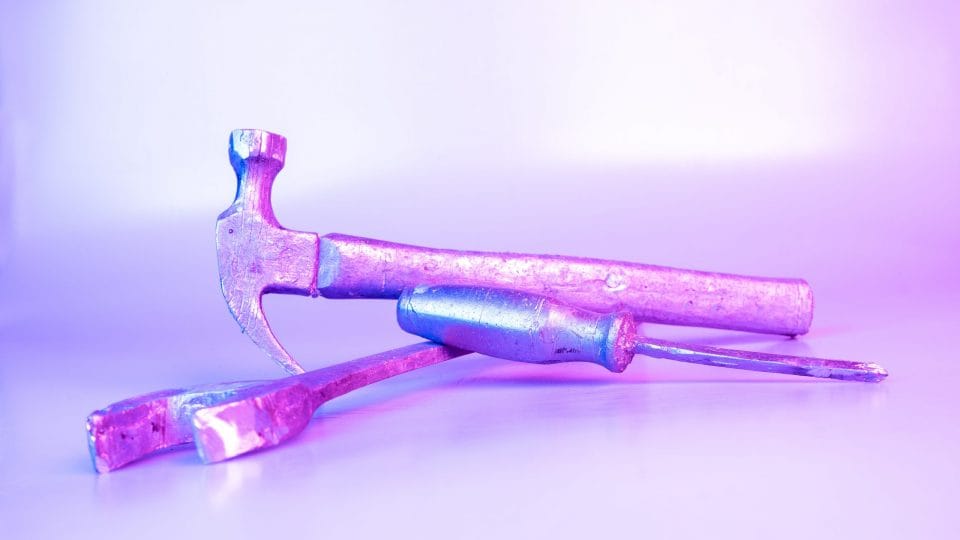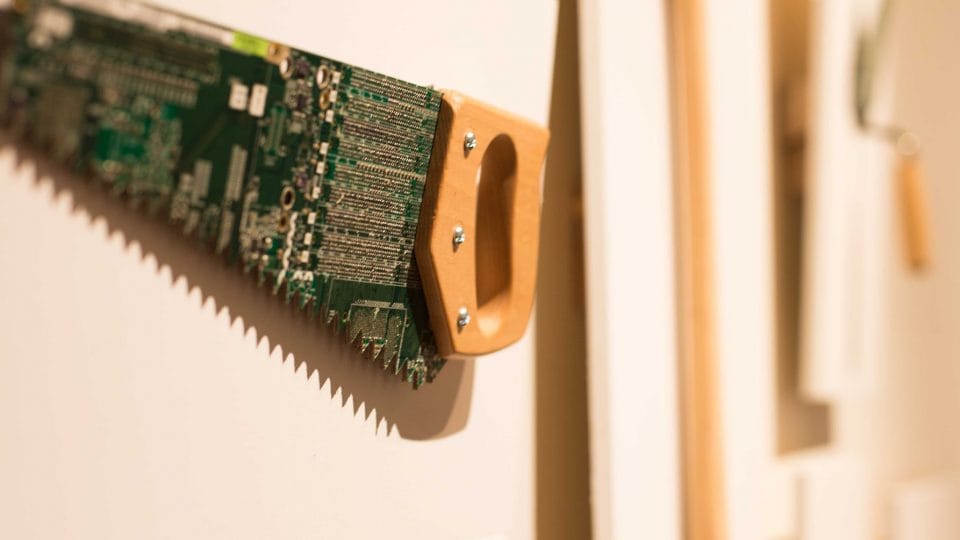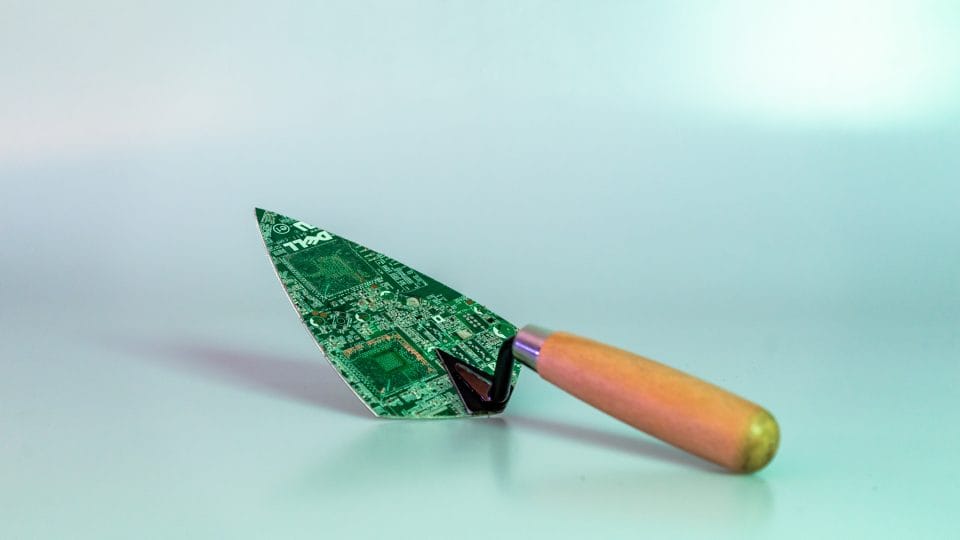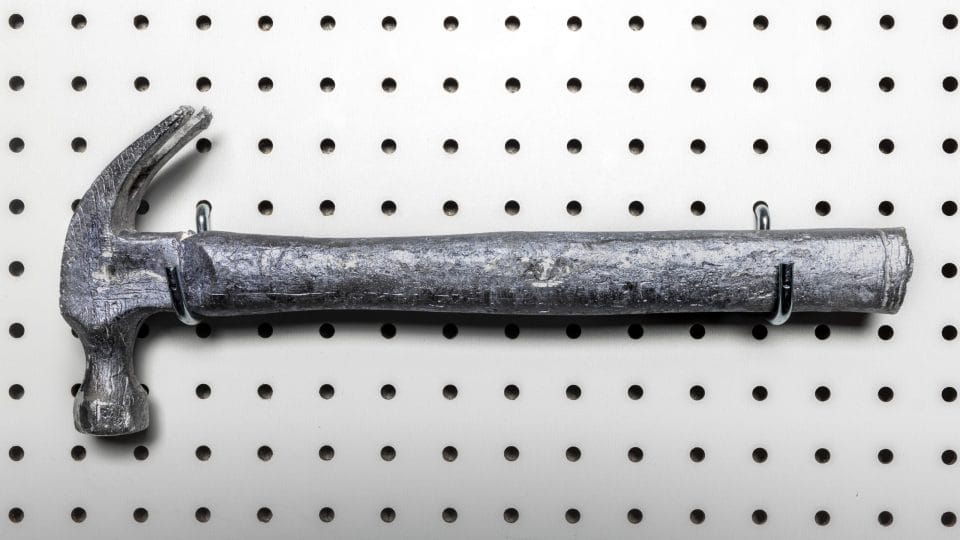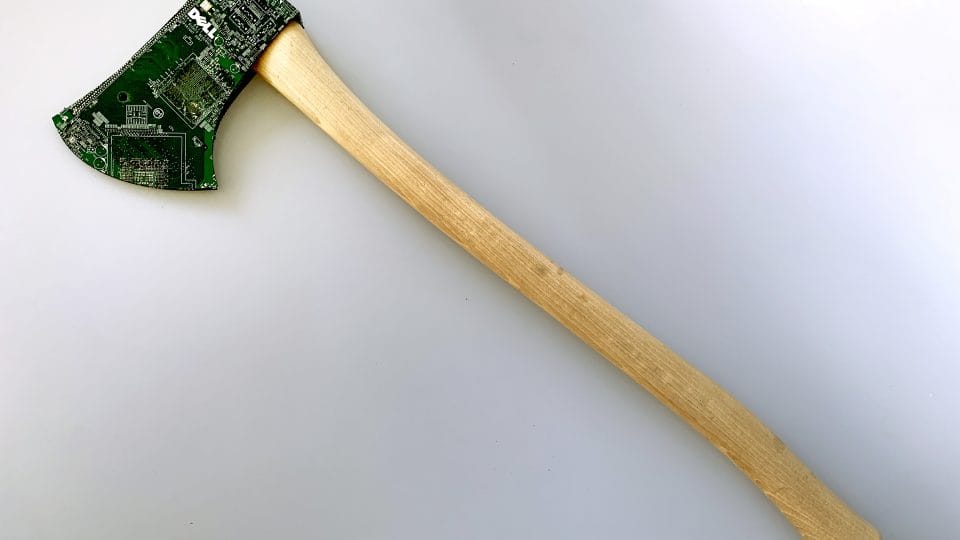How can we reinvest in what digital and electronic waste might be and do right now?
For Applecations, I melted down the iconic aluminum iMacs from the late 2000s in a foundry, and recast that metal into a hammer, screwdriver, and wrench. While the metal is a bit soft for continuous productive use of these newly formed tools, like Phonēy Prints these objects exhibit how human speculation, experimentation, and intervention can literally re-cast electronic waste as a raw material for future use.
Circuitous tools are routed circuit boards turned into a saw, axe, and trowel. These objects similarly ask viewers to be curious and imagine, to speculate and propose. We should not only ask what digital media will be and do, after us. We must reinvent what digital waste can be and do, in the present.
Applecations and Circuitous tools are part of The World After Us: Imaging techno-aesthetic futures, a series and traveling exhibition of media sculptures that materially speculate on what our devices – phones and tablets, batteries and displays, etc – might become, over thousands or millions of years. Through research, experimentation, and craft, I attempt to mimic geological time, as pressure and heat, with earth and clay – through chemical interactions or specialized machinery – on laptops and tablets, then display where that potential lies, as petrified-like LCDs or mangled and melted electronics, on pedestals in a gallery, or in beakers and tubes (Phossils). I also turn “dead media” computers into efficient planters for edible goods, food for mold, or seeds of their own growth – and show them as photos, videos, and sculptural forms (Server Farms). utilities see e-waste used as a raw material, transformed into useful tools or ink or tiles, while Drivers stage all these works as mediagenic images. The exhibition also sees a 250-plus square foot, wall-based installation alongside three, greater than human-sized towers of piled-on electronics and plant life.
It is impossible for humans to truly fathom our planet on its own terms and at its own size, or conversely from the perspective of bacteria. But we can feel such things, through art and storytelling – making our aesthetic encounters both conceptually and ethically vital toward new futures. The World After Us questions how we move, think, feel, and act with the Earth and its inhabitants, both living and otherwise. At stake, whether in our everyday interactions or on a much larger scale, are the (digital) relationships between humans and the natural world on the one hand, between politics and commerce on the other.
The World After Us: Imaging techno-aesthetic futures will premiere at the Museum of Wisconsin Art | Downtown (MoWA | DTN) in the Saint Kate Arts Hotel in Milwaukee, WI, January 2020, and travel thereafter. It makes available a 200-page hardcover catalog, a short documentary, and an audio tour. It is generously supported by the UWM Office of Research.
Related texts/press:


